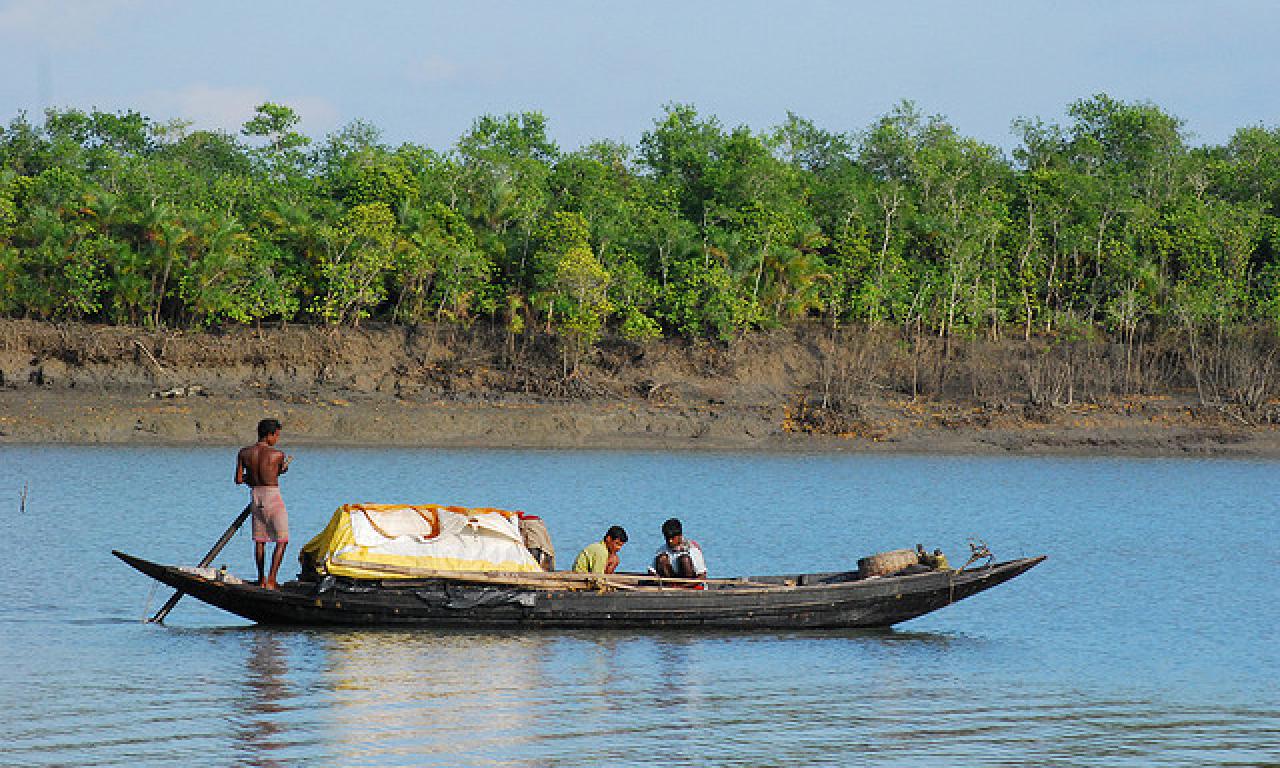
On December 9, 2014, a major oil spill of 350,000 litres occurred in the UNESCO World Heritage site of the Sundarbans in Bangladesh. The accident threatened to destroy the world's largest mangrove ecosystem and its unique aquatic life. There were fears that the spill might lead to severe long-term degradation of this delicate and ecologically important environment.
Recommended publications
- Sea level rise and tigers: predicted impacts to Bangladesh's Sundarbans mangroves: A letter
- Mangrove revival diversifies livelihoods while addressing climate change
On December 9, 2014, a major oil spill of 350,000 litres occurred in the UNESCO World Heritage site of the Sundarbans in Bangladesh. The accident threatened to destroy the world's largest mangrove ecosystem and its unique aquatic life. There were fears that the spill might lead to severe long-term degradation of this delicate and ecologically important environment.
The Sundarbans, located in the southwest of Bangladesh, contains the largest mangrove forests in the world. The area is economically important for communities in the region, many of which depend on them for their livelihoods. The waters are home to fisheries for the culturally and nutritionally important hilsa fish, and the mangroves provide a natural buffer between the area’s 10 million inhabitants and the frequent tropical cyclones that hit the region. The forests are also home to unique flora and fauna, including endangered Bengal tigers and Irrawaddy dolphins.
In response to the oil spill, USAID/Bangladesh and WorldFish under the auspices of the USAID-funded Enhanced Coastal Fisheries project (ECOFISHBD) project deployed three experts and logistical support in order to better understand the effects on biodiversity and local fisheries and to strengthen the Government of Bangladesh’s efforts in containing and cleaning up the oil spill. Additionally, USAID and WorldFish provided support in developing an action plan for the recovery of the mangrove ecosystem.
Hilsa migratory routes and breeding grounds in the Bay of Bengal are already under threat from pollution, silting and climate change. The loss of biodiversity, particularly where it provides essential ecosystem services, such as food production in the form of fisheries, can have dire consequences for communities. The results of the USAID and WorldFish analysis will inform policy development to build resilience in the ecosystems of the Sunderbans.
As part of the assessment in December 2014, the final UN report recommended further monitoring to conclusively determine the effect of the residual oil in the aquatic environment and its impacts on fisheries and livelihoods. However the final assessment was positive, noting that the impacts of the spill were limited. Despite this, the accident represented a ‘serious wake-up call’ according to the report, with the lack of a formal oil spill contingency plan highlighted in particular.
WorldFish will continue to work with partners in the Sundarbans to protect livelihoods and to protect hilsa migration routes in the Ganges-Brahmaputra-Meghna basin as part of the ECOFISHBD project which is aimed at conserving stocks of the national fish of Bangladesh – the hilsa, as well as enhancing the livelihoods of communities reliant on the fisheries for income and nutrition. ECOFISHBD is jointly implemented by the Department of Fisheries, Bangladesh and WorldFish.
Image credit: Sayamindu Dasgupta
